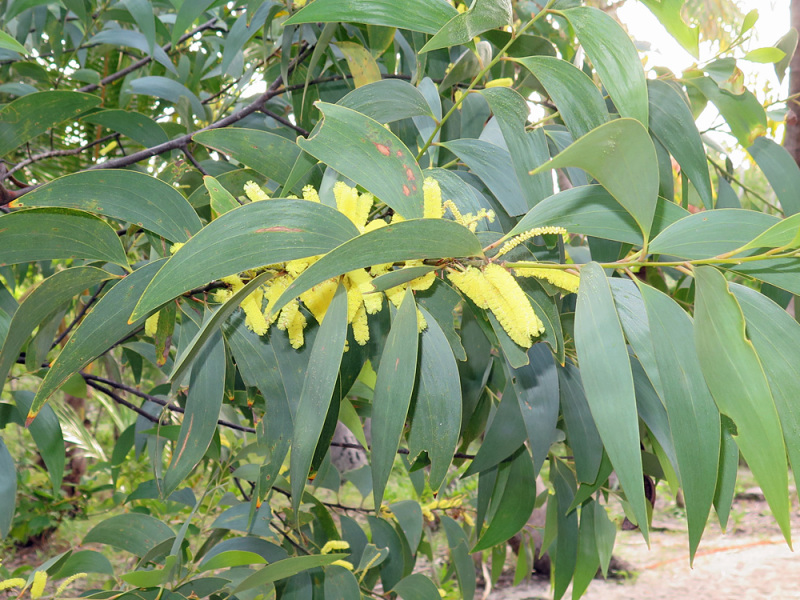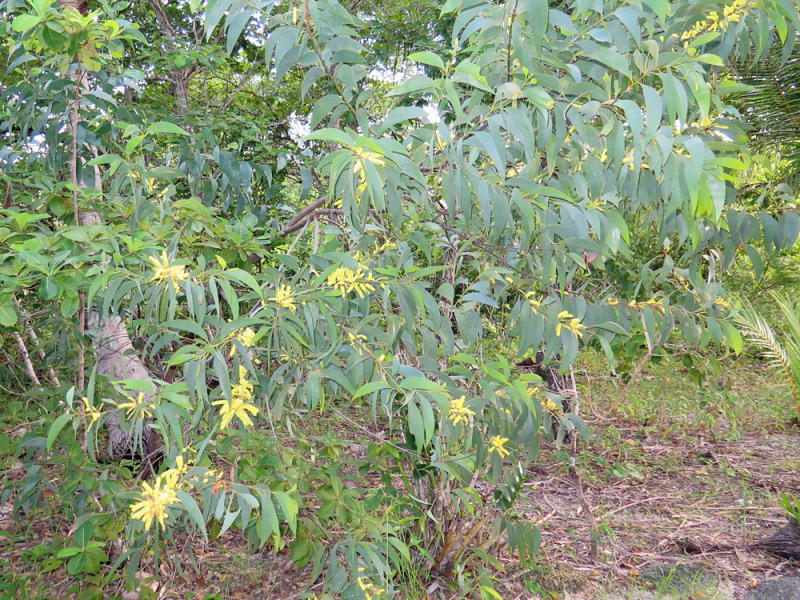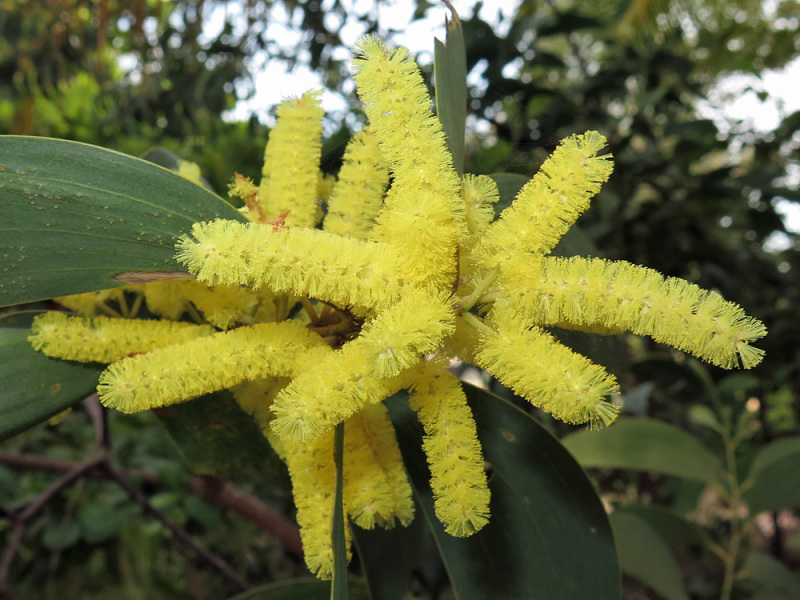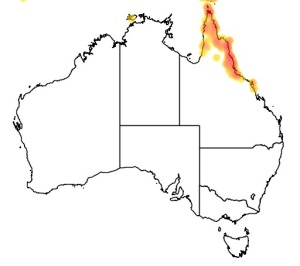Colours
Distinguishing features
It is a small- to medium-sized tree; bole often straight and branchless for about 13–18 m and up to 50–60 cm in diameter; crown heavily branched and spreading.
Bark dark or grey brown, hard with deep vertical furrows; inner bark is red and fibrous.
Phyllodes falcate, 8-27 x 1-4.5 cm, greyish-green, glabrous; primary veins 3-5, prominent, longitudinal, tending to run into the lower margin at the base; secondary veins parallel, not anastomosing, crowded; pulvinus, 4–20 mm long with a circular gland at the top.
Inflorescence a bright yellow spike, 4–7 cm long, clustered in groups of about 2-6 in the upper axils; peduncle 5–10 mm long, rachis thick; flowers pentamerous, bisexual; calyx broadly cupular, 0.5-0.7 mm long, lobes concave, lobed to about halfway down; corolla widely spreading, glabrous, 1.3-1.6 mm long, 2-3 times as long as the calyx; stamens 2–3 mm long; ovary shortly pubescent, more densely hairy at the top. Pod woody, ovoid-oblong, flat, 5-8 x 2–4 cm, glabrous, dull brown, transversely veined but hardly reticulate.
Seed oblongoid, 5-6 x 2–3 mm, black, arranged separately in separate compartments; areole large and almost closed; funicle folded and thickened, forming a long, pale creamy-yellow aril below the seed. (Wikipedia)
Size
- Up to 3000 cm (Height)
Synonyms
Distribution
Distribution and habitat preferences
The species is found in warm to hot humid and sub-humid zones in the lowland tropics. In Australia, it is commonly found immediately behind beaches, on coastal plains and foothills. It appears to be tolerant of salt spray and soil salinity.
In Papua New Guinea and Irian Jaya, Indonesia, it is found on the gently undulating terrains on well-drained, strongly acid soils, and on imperfectly drained soils that flood in the wet season.
In the southern coastal lowlands of Queensland the species occurs in the understorey of open forest and in open woodland dominated by Eucalyptus pellita, Eucalyptus tereticornis or Eucalyptus tessellaris.
On frontal sand dunes it is found as a wind-sheared shrub or small tree, behind Casuarina equisetifolia and associated with Alphitonia exelsa.
On Cape York Peninsula, it is associated with Eucalyptus tetrodonta, Allocasuarina littoralis and Melaleuca species.
In Papua New Guinea, it occurs frequently with Acacia aulacocarpa, Acacia auriculiformis and Acacia mangium. (Wikipedia)
Web resources
References
- Lentfer, C.J., M.W. Felgate, R.A. Mills and J. Specht (2014). Human history and palaeoenvironmental change at Site 17, Freshwater Beach, Lizard Island, Northeast Queensland, Australia. Queensland Archaeological Research, 16: 141-164. LIRS catalog number 1757.
- Proske, U. and S. Haberle (2012). Island ecosystem and biodiversity dynamics in northeastern Australia during the Holocene: Unravelling short-term impacts and long-term drivers. The Holocene, 22(10): 1097-1111. LIRS catalog number 1540.




